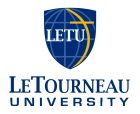Below is a summary of the abstract you submitted. Presenting author(s) is shown in bold.
If any changes need to be made, you can modify the abstract or change the authors.
You can also download a .docx version of this abstract.
If there are any problems, please email Dan at dar78@pitt.edu and he'll take care of them!
This abstract was last modified on March 28, 2023 at 1:53 p.m..

Bacteriophages (also known as phages) are viruses that infect and replicate in bacteria. Viruses that specifically infect bacterial hosts in family Mycobacteriaceae are called Mycobacteriophages. Bacteriophages are increasingly important to the scientific community for purposes like phage therapy, bioremediation, and food industry biocontrol. Comparative genomics is important because it can reveal evolutionary relationships between organisms, show what genes are conserved between organisms, and unveil unique sequences in specific genes. The purpose of this research was to comparatively analyze the genomes of the phages discovered at LeTourneau University in the largest Actinobacteriophage cluster, A. Various bioinformatics software and databases were utilized in this endeavor, including DNA Master, phagesDB, NCBI, HHPred, Phamerator, Geneious Prime, BLAST Ring Image Generator (BRIG). This analysis highlights genes that are conserved across the cluster, such as endonucleases, exonucleases, and immunity repressors that are expected to be found in temperate phages. It also focuses on genes that were found only in some phages in Cluster A, notably integrase, ParA- and ParB-like dsDNA partitioning proteins. Such differences within the cluster are important to identifying which phages may be able to infect different bacteria more efficiently and be more effective in phage therapy for antibiotic resistant bacterial infections. Whereas all the phages had sufficient genetic similarity to support their grouping in the same cluster, the phylogenetic trees split them into two major clades, one containing phages Bombshell (A4), Chaph (A4), Koreni (A4), and Dublin (A5), and the other containing phages Duplo (A2), Pmask (A6), SuperCallie99 (A6), WunderPhul (A6), Gilberta (A11), MaCh (A11), and PainterBoy (A16), with members of the same subcluster clustering closer than others within the clades. Between these two clades, 60% of the members had the Par-A and Par-B domain gene set while the other 40% had integrases. Interestingly, phage Duplo had both integrase and the ParB-like nuclease domain genes. This indicates that Duplo might be more efficient at infecting bacteria than the other phages analyzed and with more potential for phage therapy and other uses. Further research into how these specialized genes are distributed and conserved across cluster A, as well as comparative host range studies on Duplo and other cluster A phages is warranted.

